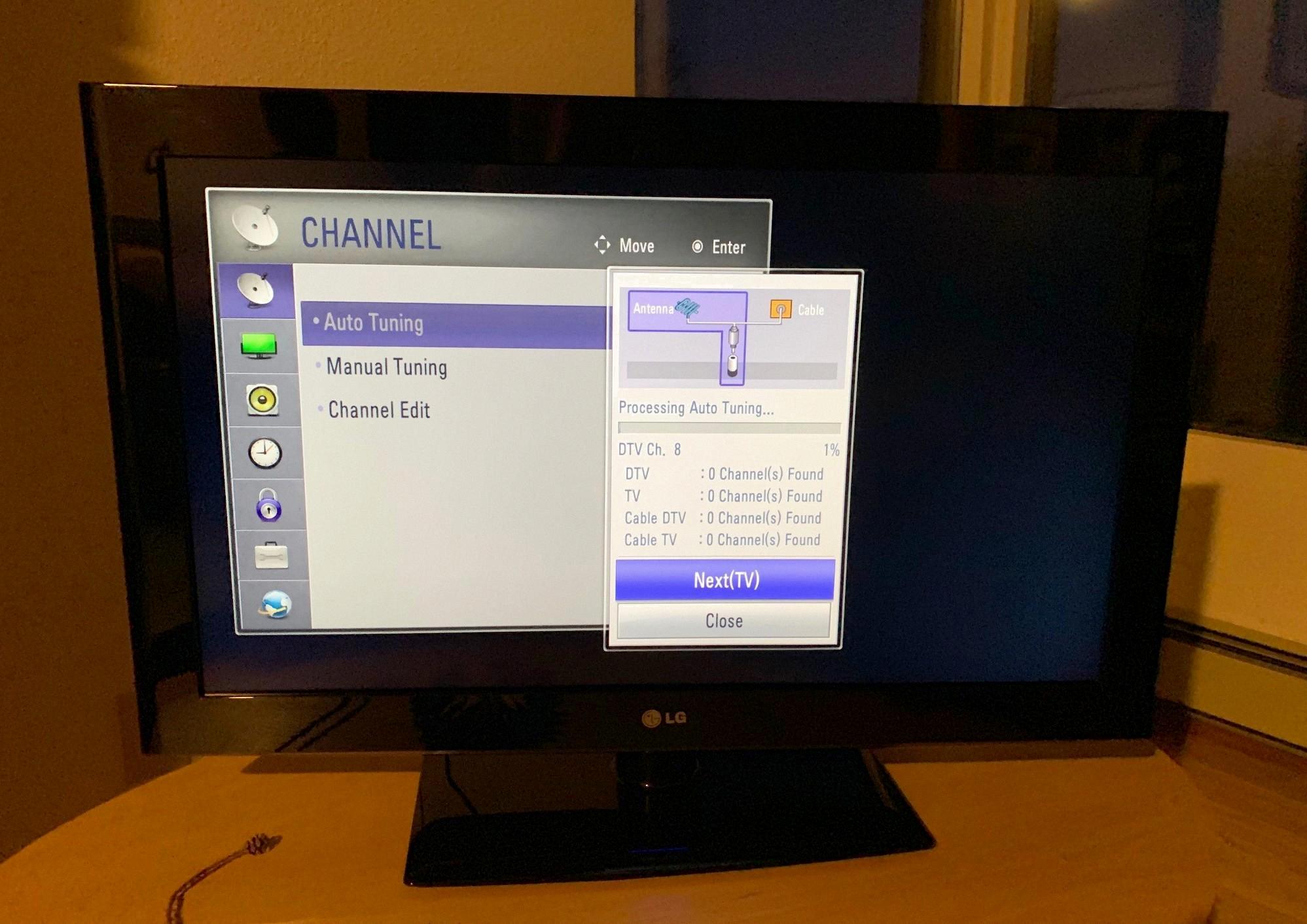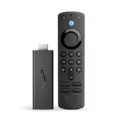Digital television (DTV) is the next generation of broadcasting technology that has revolutionized the way we receive and watch television. With the digital television transition, analog signals have been replaced by digital signals, offering viewers a superior and more immersive viewing experience.
One of the key advantages of DTV is the improved picture and sound quality. Analog signals were prone to interference and degradation, resulting in fuzzy or snowy pictures and poor sound quality. Digital signals, on the other hand, are transmitted in a binary format, which means that the picture and sound are converted into a series of ones and zeros. This ensures a consistently clear and crisp picture, with vibrant colors and sharp details. The sound quality is also enhanced, with options for surround sound and multiple audio tracks.
Another significant benefit of DTV is the availability of more channels. Digital broadcasting allows for the transmission of multiple channels within the same frequency range that was previously used for a single analog channel. This means that viewers now have access to a wider range of television programming, including high-definition (HD) channels, local and regional channels, and even interactive services.
Digital television also offers improved reception and coverage. Analog signals were susceptible to various types of interference, such as weather conditions and physical obstacles, which could result in a poor reception or loss of signal. With digital broadcasting, the signals are more robust and can overcome these challenges more effectively. As a result, viewers can enjoy a more reliable and consistent reception, even in areas with weak or marginal signal strength.
Furthermore, DTV provides additional features and functionalities that were not possible with analog television. Interactive services, such as video-on-demand, electronic program guides, and digital closed captioning, are now available to viewers. These features enhance the overall television viewing experience, allowing viewers to have more control over what they watch and when they watch it.
It is important to note that in order to receive digital television broadcasts, you need a television with a built-in digital tuner or a separate digital converter box. Most modern televisions come with a digital tuner, but it is always a good idea to check the specifications of your TV to ensure that it is capable of receiving digital signals. If your TV does not have a built-in digital tuner, you can easily obtain a digital converter box to connect to your existing TV.
Digital television has revolutionized the way we watch television, offering superior picture and sound quality, more channels, improved reception, and additional features and functionalities. With the digital television transition, viewers can enjoy a more immersive and enjoyable television viewing experience, with access to a wider range of programming options. So, if you haven’t made the switch to digital television yet, it’s time to embrace this new era in broadcasting technology.
What Does DTV Air Mean On Antenna?
DTV air on antenna refers to the transmission of digital television signals over the airwaves, which can be received by an antenna. It is a method of broadcasting television content using digital signals instead of the traditional analog signals. Here are some key points to understand about DTV air on antenna:
1. Digital Signals: DTV uses digital signals to transmit television content. These signals are binary in nature, consisting of 0s and 1s, which are encoded and decoded by the transmitting and receiving equipment.
2. Better Quality: DTV offers improved picture and sound quality compared to analog signals. It provides sharper images, vibrant colors, and clearer audio due to the digital nature of the signals. This enhanced quality is one of the main advantages of DTV over analog television.
3. High Definition (HD): DTV allows for the transmission of high-definition television (HDTV) signals. HDTV provides a much higher resolution than standard-definition television, resulting in a more detailed and immersive viewing experience.
4. Multiple Channels: With DTV, broadcasters have the ability to transmit multiple channels on a single frequency. This means that a single broadcaster can provide multiple programs simultaneously, offering viewers a wider range of content options.
5. Signal Reception: To receive DTV signals, you need an antenna that is capable of capturing the digital signals. These antennas are designed specifically for DTV reception and can be either indoor or outdoor. The antenna should be positioned correctly to ensure optimal signal reception.
6. Signal Strength: The quality of DTV reception can vary depending on the signal strength in a particular area. Factors such as distance from the broadcasting tower, obstacles like buildings or trees, and interference from other electronic devices can affect the signal strength. Using a high-quality antenna and positioning it correctly can help improve reception.
7. Channel Scanning: When using an antenna to receive DTV signals, you may need to perform a channel scan on your television or set-top box. This scan allows your device to detect and store the available digital channels in your area. It is recommended to periodically rescan for channels to ensure you have access to any new or changed broadcasts.
DTV air on antenna refers to the transmission of digital television signals over the airwaves, which can be received by an antenna. It offers improved quality, including high-definition content, and allows broadcasters to transmit multiple channels on a single frequency. To receive DTV signals, a suitable antenna is required, and factors such as signal strength and channel scanning should be considered for optimal reception.

How Do I Know If My TV Is DTV?
To determine if your TV is equipped with a digital tuner, there are a few methods you can follow:
1. Check the markings on the front or back of the TV: Look for labels or symbols that indicate a digital tuner. These markings may include ATSC, DTV, HDTV, Digital Ready, HD Ready, Digital Tuner, Digital Receiver, Digital Tuner Built-in, or Integrated Digital Tuner. If you find any of these labels, it means your TV has a digital tuner.
2. Find the model number: Locate the model number of your TV, usually found on the back or side of the device. Once you have the model number, visit the manufacturer’s website and search for the specifications of your TV model. Look for information regarding the tuner type. If it mentions an ATSC tuner or any other form of digital tuner, then your TV is DTV compatible.
3. Consult the user manual: If you have the user manual that came with your TV, refer to the specifications section or the troubleshooting guide. The manual should provide details about the TV’s tuner capabilities, including whether it is a digital tuner.
4. Contact the manufacturer: If you are still unsure after checking the above methods, you can reach out to the manufacturer’s customer support. Provide them with the model number of your TV and inquire about its tuner type. They should be able to confirm if your TV is DTV compatible.
Remember, having a digital tuner is essential for receiving over-the-air broadcasts in countries that have transitioned to digital broadcasting. If your TV does not have a digital tuner, you may need to purchase an external digital converter box to receive digital signals.
Are DTV Channels Free?
DTV channels are free. Digital TV, also known as DTV, allows you to access over-the-air broadcasting signals through an antenna without any subscription fees. This means that you can enjoy a variety of channels without having to pay for a cable or satellite subscription.
Here are some key points to consider:
1. No subscription fees: Unlike cable or satellite TV, DTV channels do not require a monthly subscription. Once you have the necessary equipment, such as a digital TV or a set-top box, and an antenna, you can start watching DTV channels for free.
2. Local channels: DTV provides access to local broadcast stations in your area, including major network channels like ABC, CBS, NBC, and FOX. These channels offer a range of programming, including news, sports, entertainment, and more.
3. Additional channels: In addition to local channels, DTV also offers a variety of additional channels that may not be available on cable or satellite. These channels can include subchannels of local stations, educational programming, foreign language channels, and niche content that caters to specific interests.
4. High-definition (HD) quality: Many DTV channels are broadcast in high-definition, providing a superior picture and audio quality compared to older analog TV signals. This allows you to enjoy a more immersive viewing experience, especially if you have a compatible TV.
5. Equipment requirements: To access DTV channels, you will need a digital TV or a set-top box that supports digital reception. Most newer TVs come with built-in digital tuners, but if you have an older TV, you may need to purchase a separate set-top box. Additionally, you will need an antenna to receive the over-the-air signals.
DTV channels are free to access and provide a wide range of programming, including local channels and additional content that may not be available on cable or satellite TV. By utilizing an antenna and the necessary equipment, you can enjoy high-quality, cost-effective television without the need for a monthly subscription.
What Is The Difference Between ATV And DTV?
ATV, also known as Advanced Television, refers to the use of digital transmission technology for broadcasting video and audio information on both broadcast channels and cable TV. On the other hand, DTV stands for Digital TV, which is the general term used to describe the transmission and reception of digital video and audio signals through television.
To provide a more detailed understanding of the difference between ATV and DTV, let’s break it down:
1. Transmission Technology:
– ATV: ATV specifically refers to the use of advanced digital transmission technology for broadcasting television signals. It encompasses various technologies such as high-definition television (HDTV), digital satellite broadcasting (DBS), and digital cable television.
– DTV: DTV, on the other hand, is a broader term that encompasses all forms of digital television transmission, including ATV. It includes both over-the-air broadcasting and cable/satellite distribution of digital signals.
2. Signal Quality:
– ATV: ATV is designed to provide improved signal quality compared to traditional analog TV. It offers sharper and clearer images, enhanced color reproduction, and better sound quality.
– DTV: DTV, as a general term, encompasses all forms of digital transmission, including ATV. Therefore, the signal quality can vary depending on the specific technology used. However, in most cases, digital TV provides superior picture and sound quality compared to analog TV.
3. Channel Capacity:
– ATV: ATV, being a subset of DTV, utilizes digital compression techniques that allow for more efficient use of the available frequency spectrum. This results in the ability to transmit multiple channels within the same bandwidth.
– DTV: DTV, being a broader term, includes various digital transmission technologies that offer increased channel capacity compared to analog TV. It allows for the transmission of multiple channels, interactive services, and additional data alongside the main video and audio content.
4. Transition from Analog to Digital:
– ATV: ATV played a significant role during the transition from analog to digital TV. It introduced new digital technologies and paved the way for the adoption of DTV.
– DTV: DTV represents the ultimate shift from analog to digital television. It encompasses all aspects of digital transmission, including ATV, and is now the standard format for television broadcasting worldwide.
ATV is a specific implementation of digital transmission technology for television broadcasting, while DTV is a broader term encompassing all forms of digital TV transmission. ATV contributed to the transition from analog to digital TV and offers improved signal quality and increased channel capacity. DTV, being the overarching term, represents the complete shift to digital television and encompasses various digital transmission technologies.
Conclusion
DTV (Digital Television) refers to the transition from analog to digital broadcast television. This switch has led to all full-power television stations broadcasting only in digital format. To determine if your TV is equipped with a digital tuner, look for markings such as ATSC, DTV, HDTV, Digital Ready, HD Ready, Digital Tuner, Digital Receiver, Digital Tuner Built-in, or Integrated Digital Tuner. Alternatively, you can locate the model number of your TV and check the specifications on the manufacturer’s website. It is important to note that digital TV is free and offers channels that may not be available on cable or satellite. ATV (Advanced Television) is another term used for digital TV, which involves the use of digital transmission for video and audio information on broadcast channels and cable TV. By embracing DTV, viewers can enjoy improved picture and sound quality, as well as access to a wider range of channels and programming options.








